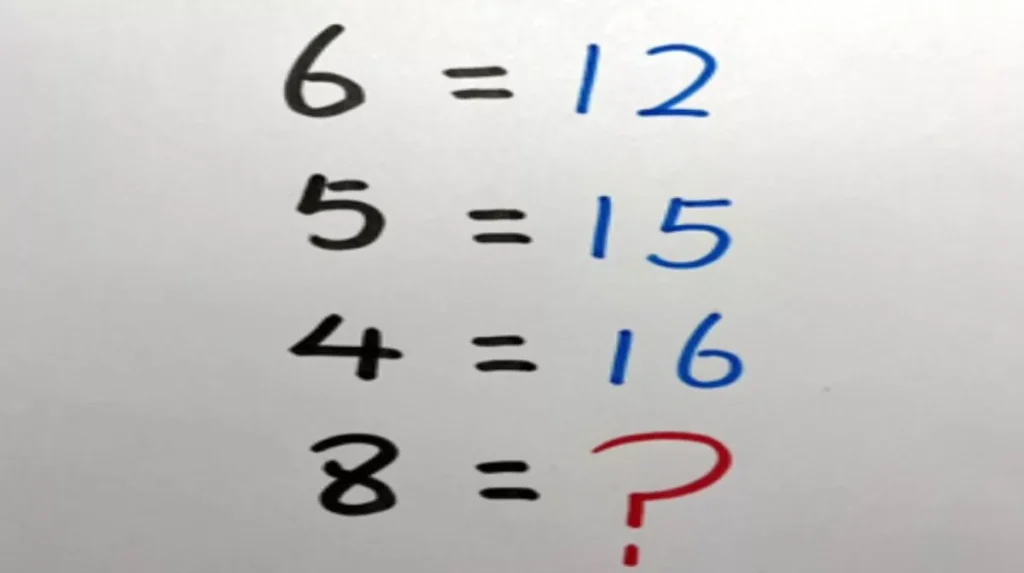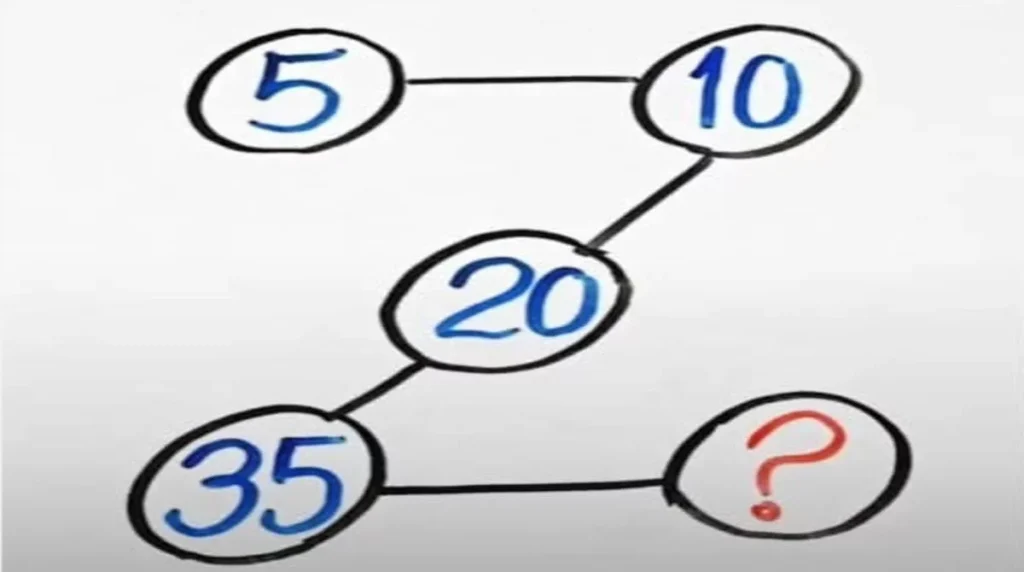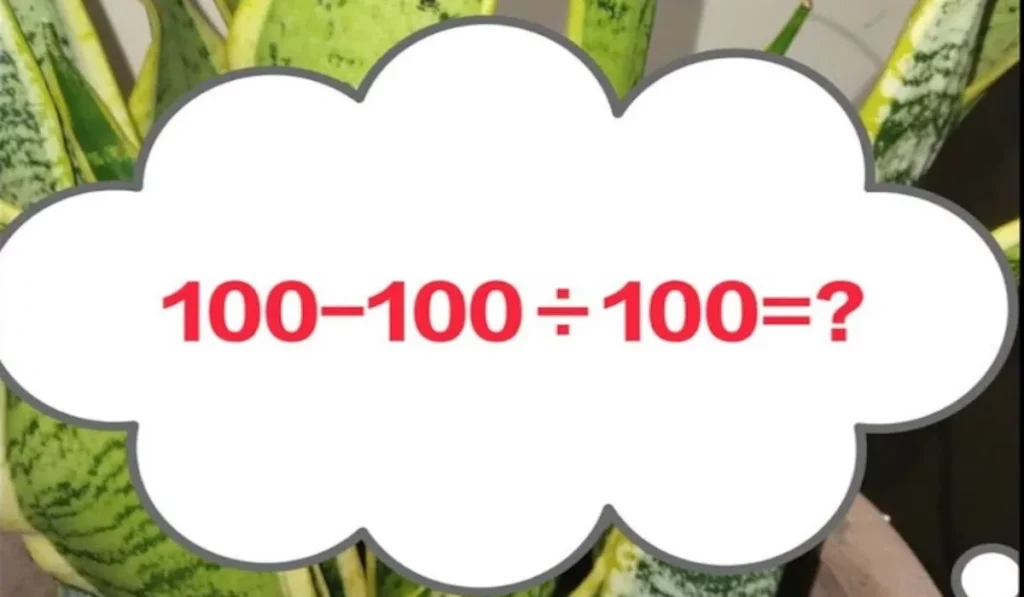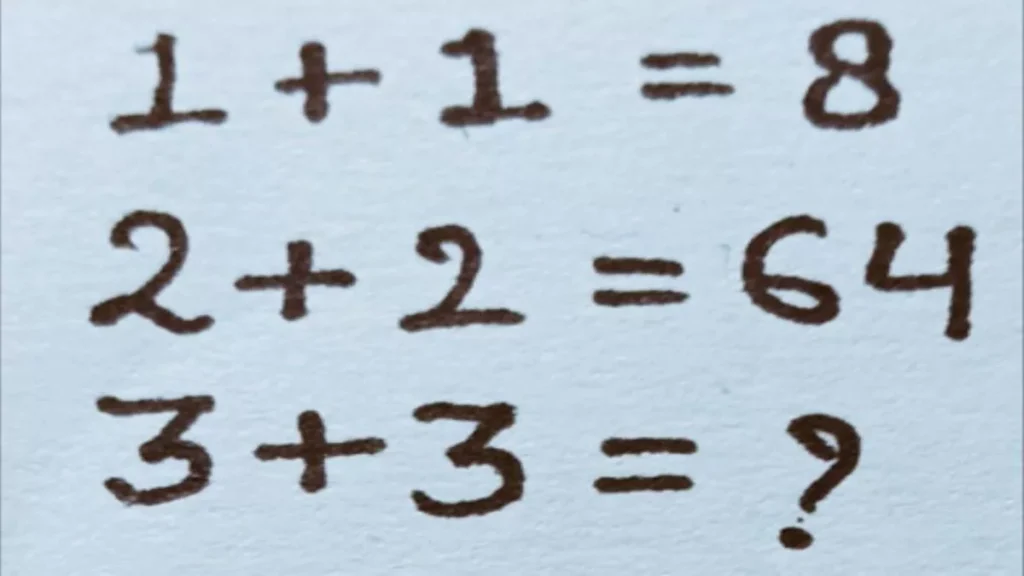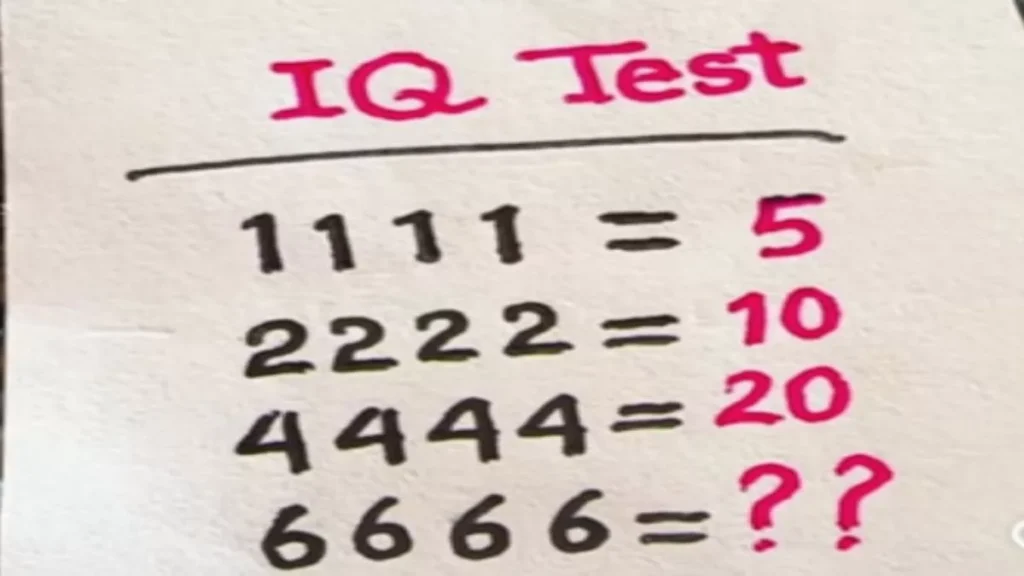A Math Puzzle Intrigued Internet Users
A math puzzle shared on social media has captured the attention of users with its subtle patterns. Math puzzles have a unique charm that fascinates both young and old. From age-related riddles to complex optical illusions and unusual number games, they provide a fun way to test problem-solving skills.
With mathematical puzzles, the challenge often escalates, as does the excitement.
If you enjoy solving numerical puzzles, here’s a new challenge that is currently making waves on the internet.
A Challenge That Made Many Think
A puzzle is currently circulating online. It features an apparently simple yet particularly perplexing scheme:
6 = 12
5 = 15
4 = 16
8 = ?
The apparent simplicity of the problem makes it even more fascinating.
At first glance, it seems to involve basic arithmetic operations, but the solution relies on uncovering a hidden logic.
Many internet users have turned to the comments to share their answers, some of which are quite logical, while others are completely outlandish.
Another Viral Challenge That Captivated Minds
A little earlier, another puzzle was shared that attracted the attention of puzzle enthusiasts:
Users were challenged to understand the hidden rule that made these equations correct.
Let’s just say, it wasn’t an ordinary math exercise.
Now it’s your turn: can you solve these mysteries?
Why Do Math Puzzles Go Viral?
Why do math puzzles generate such excitement online?
The answer is simple: they are short, captivating, and immediately ignite curiosity.
They allow users to test their intelligence and compare their answers with others, creating a mini-competition that encourages sharing.
In an era of fast-scrolling content, these challenges provide a welcome mental break and offer a genuine sense of achievement to those who manage to solve them.
Whether you are a math enthusiast or simply looking for some intellectual stimulation, these puzzles are a perfect source of enjoyment and challenge.
Here Is The Solution We Found:
The puzzle:
6 = 12
5 = 15
4 = 16
8 = ?
Analysis of the puzzle:
At first glance, you might think of classic operations (addition, multiplication…), but none seem to apply directly. So we need to look for a hidden logic.
Step 1: Observe Possible Relationships
Let’s look at what might connect each number on the left to its counterpart on the right.
- 6 → 12: 6 × 2 = 12
- 5 → 15: 5 × 3 = 15
- 4 → 16: 4 × 4 = 16
Step 2: Understand the Progression
We notice that:
- 6 is multiplied by 2
- 5 is multiplied by 3
- 4 is multiplied by 4
The multiplication factor increases by 1 as the number decreases by one unit.
It seems that the multiplier is (8 – 4) or related to the difference from a certain number.
But this avenue remains somewhat unclear. Let’s search for another logic.
Step 3: Another Approach: Add the Double of the Digit
Let’s try another idea:
- 6 + (6 × 1) = 12
- 5 + (5 × 2) = 15
- 4 + (4 × 3) = 16
Here we see that the multiplier increases by one unit each time the number decreases.
Step 4: Find the Exact Rule
Here’s the true logic that seems to emerge:
Initial number + (initial number × (6 – initial number))
Examples:
- 6 → 6 + 6 = 12
- 5 → 5 + 10 = 15 (5 × 2 = 10)
- 4 → 4 + 12 = 16 (4 × 3 = 12)
So, each time, we add the number multiplied by a descending coefficient.
Coefficients:
- 6: ×1
- 5: ×2
- 4: ×3
For 8, it would be 8 × (-1), so 8 – 8 = 0? That seems unlikely.
Step 6: Most Accepted Solution
The simplest logic adopted by many is:
Initial number × 2 = Result
Because:
- 6 × 2 = 12
- 5 × 3 = 15
- 4 × 4 = 16
So, every time, the multiplier is (8 – number).
Let’s try for 8:
8 × (6 – 8) → 8 × (-2) → -16 (that doesn’t make sense).
So, the most plausible rule is simply:
Analysis of the Diagram
Let’s observe the relationships:
- 6 becomes 12 → 6 × 2 = 12
- 5 becomes 15 → 5 × 3 = 15
- 4 becomes 16 → 4 × 4 = 16
We notice that:
Each time, the left number is multiplied by a different number.
Understanding the Logic
Let’s look closer:
- For 6, we multiply by 2
- For 5, we multiply by 3
- For 4, we multiply by 4
The multiplier increases by 1 each time we decrease by one number.
Thus, for 8, following this logic, we would multiply 8 by 8.
Final Calculation
8 × 8 = 64
Answer
Final possible answer: 64
And remember, if you don’t want to keep having fun with tests and challenges, definitely do not click here.

